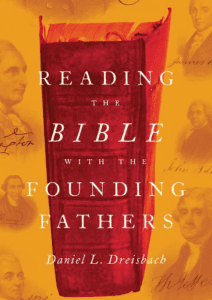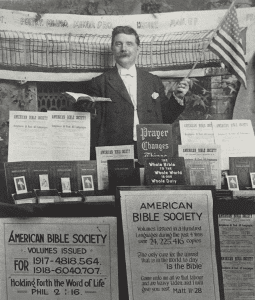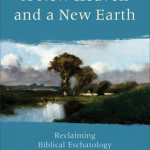 There has been something of a stir around the internet and on the news the last week or two. It seems that a couple of archaeologists at Tel Aviv University published a paper suggesting that the earliest appearance of the domesticated camel in Israel an environs was ca. 930 BCE (pdf here) (BCE = before common era, essentially the same as BC). Off hand this seems fascinating, but not terribly surprising. Yet it raises issues with the interpretation of scripture. The story has hit the major news channels, blogs, and Christianity Today.
There has been something of a stir around the internet and on the news the last week or two. It seems that a couple of archaeologists at Tel Aviv University published a paper suggesting that the earliest appearance of the domesticated camel in Israel an environs was ca. 930 BCE (pdf here) (BCE = before common era, essentially the same as BC). Off hand this seems fascinating, but not terribly surprising. Yet it raises issues with the interpretation of scripture. The story has hit the major news channels, blogs, and Christianity Today.
Some of the headlines are rather sensationalistic.
Domesticated Camels Came to Israel in 930 B.C., Centuries Later Than Bible Says (National Geographic)
Camels Don’t Belong in the Old Testament (Forbes)
The Mystery of the Bible’s Phantom Camels (Time)
Will camel discovery break the Bible’s back? (CNN Religion Blog)
Camel bones suggest error in Bible, archaeologists say (FOX News)
And this is only a small selection. Christianity Today has posted a response to this on their site:
The Latest Challenge to the Bible’s Accuracy: Abraham’s Anachronistic Camels? with the subtitle: Despite the latest study of bones, evidence indicates the iconic desert animals do belong in Genesis.
I was first made aware of the flap through an email sent by a concerned reader wondering what I made of this controversy. It is worth some discussion. Although the Christianity Today response makes some good points it really doesn’t eliminate the problem. There is no early evidence for domesticated camels in the area of Israel as far as I can find, and while absence of evidence doesn’t prove absence, it certainly doesn’t prove presence either.
So why the controversy? Several places in the Old Testament we find references to domesticated camels. In Genesis 12-50 the references to camels involve events dated somewhere around 1900 to 1700 BCE (all dates here are rough to give an idea, some will place Abram closer to 2100 BCE but the exact date isn’t really the point).
The texts in Genesis referring to camels are found in four places:
In Genesis 12 we read that “Abram acquired sheep and cattle, male and female donkeys, male and female servants, and camels” from the Pharaoh in Egypt who was taken with Sarai. As this is an accounting of wealth, the camel is incidental.
A more serious conflict is found in the story of Rebekah in Genesis 24 (~1800 BCE). The servant takes 10 camels, Rebekah waters the camels, Rebekah rides a camel back.
Later in Genesis 31-32 (~1725 BCE) in the story of Jacob, Laban, Leah and Rachel, camels play a minor role. Rachel is riding a camel when she has stolen her father’s household gods and put them in the camel’s saddle.
In Genesis 37 Joseph is sold to a caravan with camels.
Camels are mentioned three more times in the Pentateuch. In Exodus 9:3 (~1500 BCE) the LORD tells Moses to tell Pharaoh “the hand of the Lord will bring a terrible plague on your livestock in the field—on your horses, donkeys and camels and on your cattle, sheep and goats.” In Leviticus 11:4 and Deuteronomy 14:7 the camel is declared unclean despite the fact that it chews the cud (it doesn’t have divided hoofs). Only the first of these need refer to domesticated camels and this is simply one of a list of typical livestock. The presence of camels with horses, donkeys, cattle, sheep, and goats is not terribly important.
Camels are also mentioned in the story of Gideon in Judges 6-8 (sometime between 1400 and 1100 BCE). It was impossible to count the camels of the Midianites, the Amalekites and the other eastern peoples. In 7:12 “Their camels could no more be counted than the sand on the seashore.” In 8:21-26 Gideon takes from Zebah and Zalmunna the ornaments on their camels’ necks. This conflict is more significant, similar to the stories related in Genesis.
There are additional mentions in 1 Sam. 15:3, 27:9, 30:17; 1 Kings 10:2, 2 Kings 8:9, and in 1 and 2 Chronicles and in Job 1 and 42. As I consider Job literature, not history, the mention of camels is inconsequential. For those who consider Job early history these references may also pose a problem. The references in Samuel, Kings, and Chronicles are to dates on the cusp of documented domestication of camels in Israel and environs, early perhaps but not excessively so, especially given the kinds of records available. The evidence for camels seems to date from ca. 930 BCE and David is generally assigned dates of 1040-970 BCE, just a bit earlier. The remaining references are during or after the exile and pose no problem for the interpretation of scripture.
All in all camels are mentioned 22 times in Genesis with all but two of these in the stories of Rebekah and Jacob. This represents over a third of all mentions in scripture (from a word search of the NIV in Bible Gateway). There are three additional mentions in the Pentateuch, and four in Judges.
That this may be troublesome isn’t a new idea, although the news reports make it seem like a new discovery. In his Bible Background Commentary on Genesis (published in 2009) John Walton gives a brief paragraph concerning camels (p. 100-101).
Though the biblical text portrays camels being used for long-distance travel in a number of places in Genesis, the evidence for camel domestication is somewhat sketchy. Kitchen gives a complete listing of the data – zoological, textual, and iconographic – from the period between 2000 and 1200 B.C.
The reference is to Kitchen On the Reliability of the Old Testament. The evidence that Kitchen provides is rather sparse. First he notes that camels are last and least of Abraham’s possessions and last named of Jacob’s wealth. They do not have much of a presence in Genesis or in the rest of the Pentateuch.
For early second millennium (ca. 2000-1500 BCE) external evidence Kitchen lists four items: a camel skull in Egypt, a figurine of a kneeling camel, a camel jaw, and a cylinder seal. There are also mentions of the camel in a Sumerian lexical work dating to the early second millennium.
For the late second millennium: (ca. 1300-1000 BCE) Kitchen lists three items: a figure of a domesticated camel, a figure of a camel on pottery, a camel on a 13th century sherd, all found in Egypt.
From this he concludes that “the examples just given should suffice to indicate the true situation: the camel was for long a marginal beast in most of the historic ancient Near East (including Egypt), but it was not wholly unknown or anachronistic before or during 2000-1100. And there the matter should, on the tangible evidence, rest.” (p. 339)
The evidence for domesticated camels during the time of the Patriarchs and even of Moses is quite limited. Some of the evidence listed by Kitchen is dated by others somewhat later, ca. 1000 instead of 1300 BCE for example, or may depict wild camels rather than domesticated camels. None show camels being ridden and the authors of the paper that set off this controversy say that the earliest depictions of ridden camels are 8th century BCE. Despite Kitchen’s assurances, the references to domesticated camels in the early Old Testament are considered by many to be anachronistic, a feature from a later date imposed on a story of earlier times. The camel was inserted into the story based on later experience common to the story teller, scribe, or editor.
If this is true, does it pose a problem?
Without buying into any given critical theory lock, stock and barrel, it is fairly obvious that the Pentateuch and the historical books of Judges, 1,2 Samuel, 1,2 Kings, 1,2 Chronicles, were edited into the shape we have from multiple sources long after the time of the incidents the stories relate. This was around the time of the late kingdom, the exile, or post exile, that is, well after the domestication of camels by any reckoning. Many of the stories must have been transmitted orally or originally written in languages other than the Hebrew of the bible we have today. They were translated into the text we have through some process. Since Genesis is the focus of the controversy concerning camels, I’ll give a few examples from Genesis illustrating the influence of editors no earlier than ca. 1200 BCE or so.
There are places in the text where the perspective of the writer is clearly that of a much later time. In Genesis 12:6 we read “Abram traveled through the land as far as the site of the great tree of Moreh at Shechem. At that time the Canaanites were in the land.” In 13:7 “The Canaanites and Perizzites were also living in the land at that time.” This is written by an author or added by an editor living at a time when the Canaanites were no longer in the land. This suggests that the final form of the text we have should not be attributed to Moses. The Canaanites were in the land during his lifetime and were not expelled until much, much later, after 1000 BCE in the biblical narrative.
In Genesis 36:31 we read “These were the kings who reigned in Edom before any Israelite king reigned:” followed by a list of eight kings. Clearly the text we have dates from no earlier than the time when Israelite kings did, in fact reign. This places it no earlier than ca. 1000 BCE and likely a good deal later.
There are a number of places where Genesis places later conditions into the text. In Genesis 14:14 we read that Abram “went in pursuit as far as Dan” although we read in Joshua 19:47 “they settled in Leshem and named it Dan after their ancestor” and in Judges 18:29 “they named it Dan after their ancestor Dan, who was born to Israel—though the city used to be called Laish.”
The Philistines did not settle in the land until after 1200 BCE, yet they are referred to in passages in Genesis, in chapters 10, 21, and 26. Isaac goes to “Abimelek king of the Philistines” in chapter 26. At the mention of the land of the Philistines in 21:32 John Walton notes:
The Philistines known from the time of the Judges and the early monarchy did not come into the region and occupy this territory until around 1200 B.C. – much later than the time of Abraham and likewise later than the time of Moses. … While it is not impossible that this story represents contact with an earlier group of Philistines who settled the area prior to the Sea Peoples, most likely this is simply an anachronistic use of the name “Philistines” for the area rather than an ethnic identification of the people whom Abraham encounters. (p. 96 Genesis)
These elements indicate that there are anachronisms in the text of Genesis, and camels may well be another anachronism. It is possible that camels were included in the story simply because they were part of the common experience of those who edited together the final text of Genesis from the various sources available sometime after 1000 BCE. That the stories were transmitted orally and translated through language changes before being written in Hebrew and preserved in the form we have does not mean that they are entirely, or even substantially, false.
Where does this leave us? Perhaps evidence will be found for domesticated camels in Israel ca. 2000 BCE, but probably not. The lack of evidence to date, despite evidence for other forms of livestock, makes it seem rather unlikely that camels were part of the picture in 2000 BCE or even at the time of Gideon. That they were around at the time of David seems quite possible, although not in large numbers.
 I don’t think any of this undermines the significance of Genesis or the rest of the Old Testament as the word of God. But it does mean that we have to rethink the way we approach the text. Although we find real history in the text of the Old Testament, we must also remember that the history is told according to ancient Near Eastern norms and practices. These are not the same as modern expectations. Camels are incidental to the story and it doesn’t really matter if this detail was shaped by later experience or not. At the time of the exile and later camels were simply an expected part of the landscape. I rather expect that any wealthy man of that time would have camels among his livestock, especially for long distance travel, and this assumption found its way into the story.
I don’t think any of this undermines the significance of Genesis or the rest of the Old Testament as the word of God. But it does mean that we have to rethink the way we approach the text. Although we find real history in the text of the Old Testament, we must also remember that the history is told according to ancient Near Eastern norms and practices. These are not the same as modern expectations. Camels are incidental to the story and it doesn’t really matter if this detail was shaped by later experience or not. At the time of the exile and later camels were simply an expected part of the landscape. I rather expect that any wealthy man of that time would have camels among his livestock, especially for long distance travel, and this assumption found its way into the story.
Many of the stories that have hit the news over the last couple of weeks sensationalize both the finding and its consequences. This is not the straw that broke the bible’s back, nor does it mean that Judaism was invented during the Babylonian exile and projected it back into the distant past as one blogger claimed.
There is a message for us as Christians however. We have to learn to read scripture for the sweep of the story and for the mission of God in human history calling out his people. Genesis is a story of the origins of Israel as the people of God. Whether camels were part of the picture or not doesn’t really matter.
What do you think?
Does it matter if domesticated camels were present in Abraham’s time, ca. 2000 BCE?
What impact if any does this have on your reading of the text?
If you wish to contact me directly you may do so at rjs4mail[at]att.net
If interested you can subscribe to a full text feed of my posts at Musings on Science and Theology.











